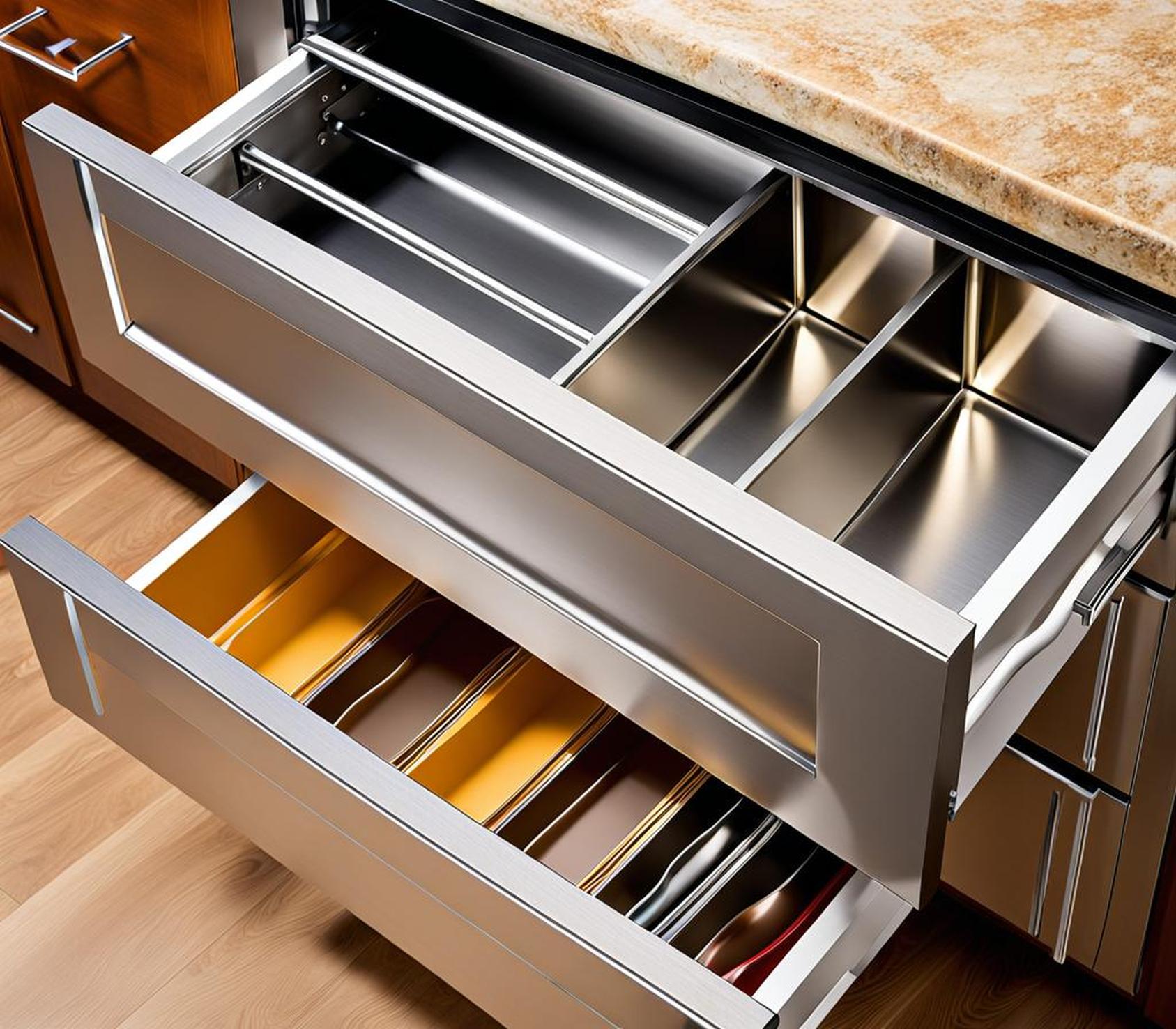When remodeling or building a new kitchen, one of the most important considerations is choosing the right drawer sizes. Properly sized drawers optimize storage, accessibility, and workflow. But with so many options, it can be tricky to identify the standard kitchen drawer sizes that will work best for your space and needs.
Read on for recommendations on standard width, depth, and height, as well as tips for measuring existing drawers during kitchen upgrades.
Drawer Width Recommendations
For drawer width, the typical range in standard cabinetry is 12-24 inches. Widths usually increase in 3 inch increments–like 12, 15, 18, 21, and 24 inches. Here are some general guidelines:
- Narrower drawers (12-15 inches) are great for storing utensils, cutlery, gadgets, and other small, flat items.
- Wider drawers (18+ inches) are useful for larger pots, pans, containers, and other bulky cooking tools.
When replacing existing drawers during a kitchen remodel, it’s crucial to measure the old drawer fronts exactly. The new drawers you order should match the previous widths to ensure proper fit within your cabinets.

Measuring Existing Drawers
If your kitchen remodel involves replacing drawers, be sure to carefully measure the existing drawer fronts. The new drawer boxes can differ in height and depth, but the width must remain the same to fit properly without issues. This allows you to modify the drawer configuration while keeping the original cabinet footprint intact.
Drawer Depth Recommendations
For depth, standard options are generally categorized as shallow (3-5 inches), medium (10-12 inches), and deep (20-24 inches). Consider your storage needs when choosing a depth:
- Shallow drawers are great for organizing utensils, cutlery, gadgets and other flat, small items.
- Medium drawers have enough depth for some pots, pans and containers.
- Deep drawers can fit bulkier items like stacks of linen, large pots and mixer stands.
Evaluate what you typically need to store when picking the right depth. Too shallow and items won’t fit. Too deep and you’ll have wasted unused space. Measure your most commonly used pots, gadgets and utensils to identify the optimal depth.
Drawer Height Considerations
For drawer height, you have more flexibility. Height is primarily determined by the existing cabinet dimensions and how much vertical space is available. In standard cabinetry, drawer height can easily be adjusted up or down within the cabinet box.
Consider ergonomic factors like your kitchen counter height when configuring drawer height. If using a standing desk, raise drawers to avoid uncomfortable bending. Make sure heights accommodate users of different statures. For accessibility, allow knee clearance underneath and make drawers wide enough to store walkers or fold away wheelchairs.
Quantity and Configuration
The number of drawers you have in a cabinet run is adjustable during kitchen remodeling projects. However, you still need adequate total drawer space for optimal functionality. Guidelines recommend having:
- 120 inches of total drawer frontage in kitchens under 150 sq. ft.
- 165 inches of total drawer frontage in larger kitchens over 150 sq. ft.
When replacing existing drawers, ensure the new configurations leave enough clearance for drawers to easily slide open on their runners without rubbing or jamming.
Features and Functionality
Today’s drawers offer more than just stationary storage. Upgrade with handy features like:
- Soft-close mechanisms for smooth, quiet operation
- Touch latch opening for easy, handle-free access
- Built-in lighting or adjustable organization systems
- Integrated smart home tech to monitor contents
- Antimicrobial materials for safety and hygiene
With some innovative thinking, you can find drawers to accommodate almost any need. Get creative with pull-out shelves for small appliances, tiered drawers for ultimate organization, or customized inserts for specialty items.
When it comes to kitchen drawers, carefully consider the width, depth and height your storage needs demand. Follow the standard size guidelines, but don’t be afraid to customize configurations to maximize functionality. Proper measurements are key during kitchen remodels. With limitless options for built-in organizational features, today’s drawers offer flexible, optimized and stylish storage.
Equipped with these standard kitchen drawer size recommendations, measurements and tips, you can design a kitchen optimized for accessibility, ergonomics, and workflow. Organize pots, pans, utensils and everything in between with drawer dimensions sized just right for you.
